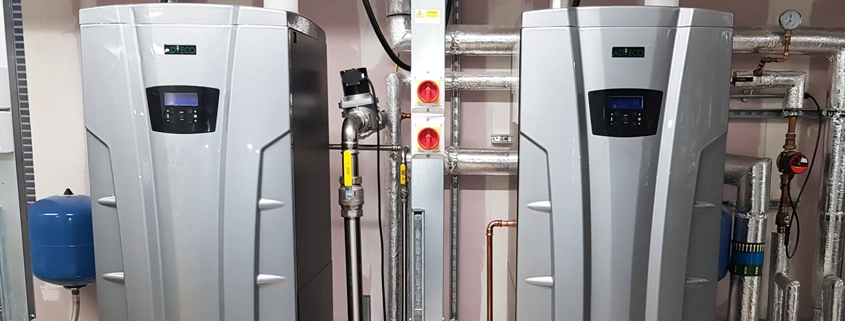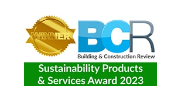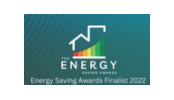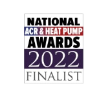Without a doubt, one of the great challenges that faces the UK is the retrofit of HVAC systems across the commercial built environment. According to the Department for Business, Energy, & Industry Strategy (BEIS) there were 1,755,000 recognised non-domestic buildings in England and Wales at the end of March 2024. Many of these buildings will have been constructed to lower energy efficiency standards and currently account for 23% of the UK built environment’s operational emissions, of which as much as 30% can be attributed to aging domestic hot water (DHW) systems.
Of these buildings, just 14.6% were constructed after 1996, and considering the rates of new construction, it is easy to see why the UK Green Building Council (UKGBC) estimates that 80% of buildings that exist today will still be here in 2050. This means the large majority require some or considerable retrofit over the next 25 years if improved performance for sustainable operation is to be achieved.
The vast majority of these buildings will be gas-connected and will have used a gas water heater, a tried and trusted technology that continues to offer a lower cost – in terms of capital and operational expenditure – means of meeting high temperature demands seen in commercial organisations.
This has meant that, despite the drive for decarbonisation, like-for-like retrofit continues to be popular. The advantage at least is that the latest generation of gas water heaters offer greater efficiency when burning gas and transferring heat to water, through improved construction of the burner and heat exchanger and smarter operation that maximises heating to hot water demand and reduces lost heat in flue gasses. Given existing systems will have long operational lives, we often see systems operating longer than 20 years and, in the extreme, more than 40, replacing them with anything new is advantageous for all involved.
When replacing gas-fired water heaters, there are a number of key considerations to take into account, so it is important to look at replacement appliances and ensure they can meet the needs of your project. A good proposition for retrofit will meet a broad checklist of requirements if it is to be suitable for universal retrofit.
First and foremost, give consideration to the location. At a macro scale, where doers the building site geologically as this sets parameters based on the water quality. Hard water areas are better served by indirect heating to reduce limescale, whereas soft water locales will be prone to corrosion, so more robust construction from stainless steel or enhanced porcelain application would be recommended. At the very local scale, does the new unit fit through a standard door? Does it need to navigate steps? So how heavy is it? Would two smaller units be more easily installed, meeting the same hot water demands and possibly be lower cost when compared to a single large unit?
Beyond the actual water heater itself, how much pipework needs adapting or replacing? Are there isolation valves on the current heaters? Do they hold, or are they passing? And can you make the new pipework from the existing valve, or do you have to cut back further than the valve? An appliance that offers multiple connection points offers the best means of replacing an old water heater quickly without major alterations to pipework, reducing both system downtime and pipework costs. On this basis, it would also be sensible to consider a shorter unit. Although an appliance’s capacity may be reduced, efficiency gains can more than make up for the difference.
The replacement should also take into account proximity to a drain to pipe away condensate or provide for drain-down maintenance. The other core consideration, and one with direct safety implications, is ensuring the flue is fit for purpose and correctly installed. Aluminium flue, for example, has an expected lifespan of around 15 years. If the old water heater is close to or older than this, it is imperative that the flue also be replaced. Old non-condensing negative draught flue is also not suitable for new condensing appliances, and it is important to remember that changes to regulations may make original terminal location unsuitable. Always check flue connections and kits available for the replacement water heater to ensure it can meet or improve on the existing installation.
To ensure system longevity, the value of investment and ongoing efficiency look for advanced features such as onboard energy and water use metering, remote connection such as wifi for app-based control and management, or connectivity to the building management system (BMS) for remote fault alarm and monitoring/control.
Most modern gas appliances will also support a 20% hydrogen blend without modification, providing a bridge to future green gas alternatives available from the grid. If the intent is to increase the building’s sustainability before the mid-2030s, then the DHW system can be expanded with the integration of a heat pump or solar thermal system acting as a pre-heat source. Operating at a lower temperature to maximise heat pump efficiency, water is preheated to 55°C and can then be topped up by the gas-fired water heater, which uses less gas for a system with greater carbon reduction. Solar thermal can be used in the same manner as a preheat, but with higher water temperatures can potentially offset all energy demands in the summer months. A minimum average of 30% of the total energy for the year required by DHW can be offset.
For true carbon reduction, we would propose employing a renewable pre-heat and then replacing gas for an electric water heater. With a variety of floor and wall-mounted electric boilers available up to 100 kW, most typical commercial applications can be serviced in a more environmentally friendly way. Operational costs will be expected to be higher while grid electricity remains more expensive than gas, but installation is far simpler and cost-effective with no flueing necessary and absolutely zero NOᵪ emissions.















